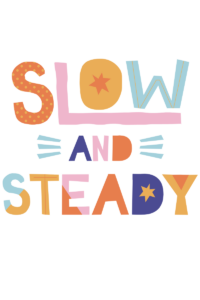Let’s Imagine…
Imagine sitting at work with your peers, and your boss presents you with an assignment, project, or task, and she sets a time limit for you and your peers. I’m not talking about a two-week deadline. We’re talking minutes to complete a task. Within that time you and your colleagues work in a competitive setting to accomplish your goal independently. How would you feel if someone else finished first? How would you feel if you finished last? Put yourself in this setting for a moment and imagine what your child or student (an 8-11 year-old) feels like when they are taking timed fact tests.

Timed Tests and Anxiety
According to Jo Boaler “Timed tests have been given to young children in schools districts in the US with the best intentions, but with negative consequences for years.”
There is so much evidence that shows timed tests cause math anxiety. When we are in an anxious situation, it is harder to focus on problem-solving. Take the example above. Would you complete your best work if your boss timed you on tasks?
Why Do Adults Put Up A Fight?
Interestingly enough I always hear from adults “well that’s the way we learned it so it can’t be bad, they just need to memorize them.” Some of these same adults pull out their calculators to figure out computations such as what to a tip or dividing up the dinner bill.
The goal here is not to take a dig at adults. The majority of the adults in the United States express they have math anxiety, or they hate math. Math has gotten a bad rap for years. Primarily because we were forced to memorize things and not reason or think through them. Let’s give our children/students a different experience from us.

What’s The Reason For Learning Facts In A Different Way?
Let me make one thing clear, I am NOT saying students shouldn’t know their facts. The issue here is that ‘speed’ has trumped ‘thinking’ for far too long. The purpose of math is not speed. One of the main goals of math is flexibility with numbers.
For example, 5 x 6 = 30. But anytime we have to solve 5 times anything higher than 12 we’re stuck. One way students are currently taught the 5 times table is to multiply something by 10 (because that is easier for our brains to do) then half the product. Why would this be a good strategy? To help us solve problems like 5 x 62. If we do, 10 x 62 is 620 and then you half that, it’s 310. See no calculator.
This example shows number sense. Number sense is about numerical intuition and timed tests negatively impacts students from learning this.

Parent Advocates
Parents, you are your child’s advocate. You have the right not to subject your child to this negative demand. I personally opted my son out of timed tests, knowing that it was going to affect his report card. I spoke with his teacher about the reasons why and she understood and supported my choice.


I had to make a choice as a parent, am I willing to let my child receive a ‘not mastered’ on his report card to do what’s right mathematically and emotionally? Yes, without a doubt. I don’t want my son to have math anxiety, he loves Math! That small score on his report card isn’t going to impact if he gets into college or not. And the truth is my son knows all his facts because he learned strategies other than being timed.
Try to move away from timed tests as a way to learn facts. Students need to learn strategies and be comfortable with them to develop automaticity.
To read more about fact fluency, check out these resources:
Teaching Student-Centered Mathematics
Math Running Records In Action
Want to check out more?
MEMBERSHIP SITE:
https://zennedmath.com/online-courses/
FACEBOOK GROUP: Zenned Math Teachers
https://www.facebook.com/groups/zennedmathteachers/
YOUTUBE CHANNEL: Zenned Math
https://www.youtube.com/channel/UC5njH_5LoK6G67BvZecGfnw?
WANT ME IN YOUR INBOX? Sign up for my newsletter
https://view.flodesk.com/pages/5efc876dcaabca0028b95eb5
DISCLAIMER: Some links included in this blog might be affiliate links. If you purchase a product or service with the links that I provide, I may receive a small commission. There is no additional charge to you!

